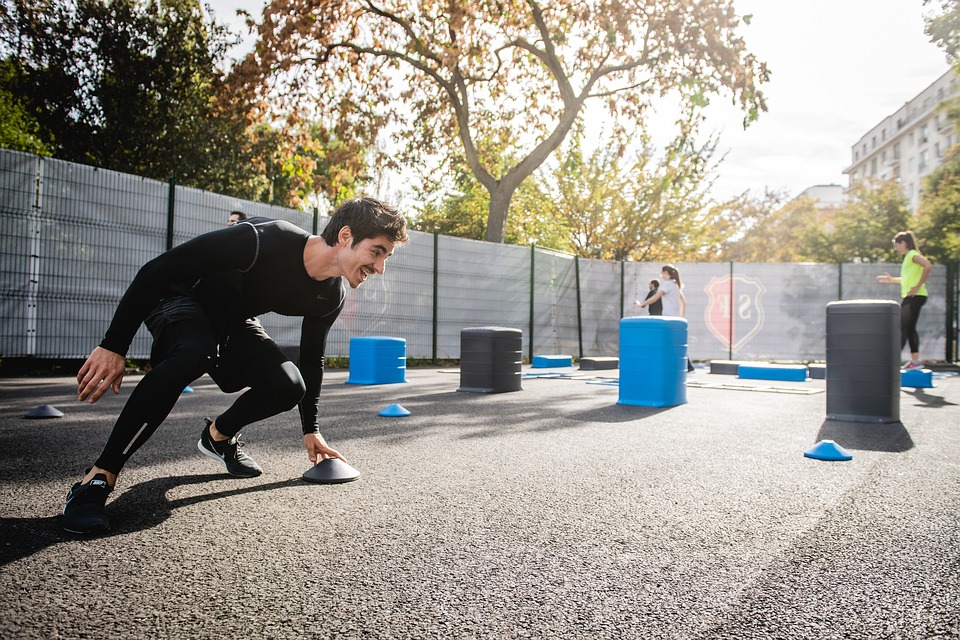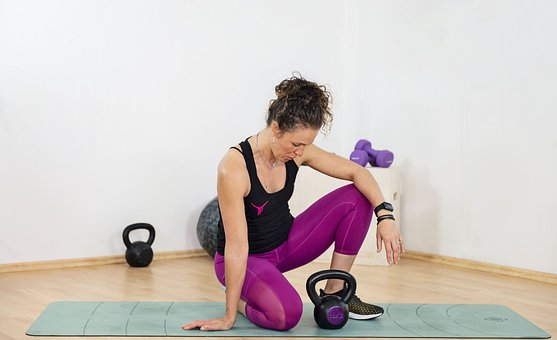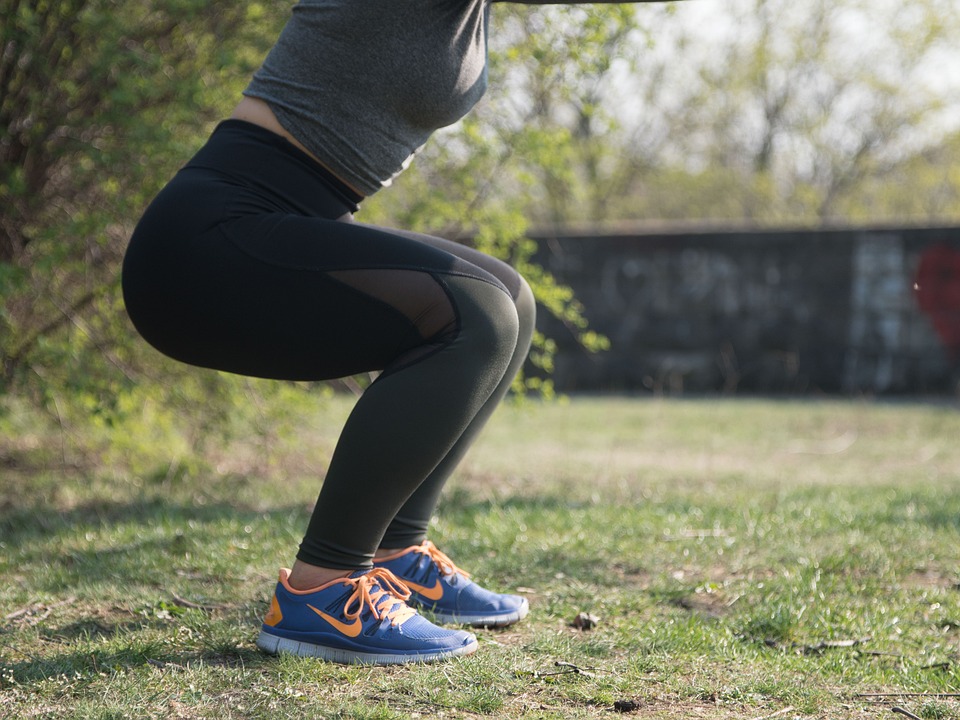
When you are geared up to take advantage of the fruits of your labors, it is the ideal opportunity to enhance your physical exercises. You see, great workouts accumulate. They build incredible momentum, motivation, and workout consistency. These all add up to incredible results for you.
To commence your journey to optimum physical fitness, we have assembled a bunch of incredibly useful advice to improve your exercise programs.
These tips are dedicated to helping you:
- Structure your workouts
- Improve your strength, fitness, and energy
- Shred fat
- Stay consistent
- Drive your motivation
1. Have a plan
It is essential to begin your exercise routine with a strategy. Many individuals enter the gym with little or no knowledge of how to go about their workout. After that, they remain faithful to their regular activities or spend a great deal of time attempting to decide what course of action to take. No matter which of the two situations you choose, you will not achieve the desired outcome and this will lead to a serious drop in enthusiasm and regular exercise.
Create the following plan before your next workout:
- When is it going to take place
- Where is it going to take place
- What exercises are you going to complete and in what order
2. Set a workout time limit
The majority of workouts lack effectiveness due to their excessive length and/or lack of intensity. People usually begin exercising, but they frequently find themselves more focused on having conversations or scrolling through their phones than they are on their actual workout. Reducing incentives and making it difficult to work hard enough to experience meaningful changes are the results of this. Steer clear of making a big blunder by allotting a certain amount of time for your exercise routine. This will keep you both motivated and moving efficiently. Keep your workouts between 35 and 50 minutes. Anything above that amount of effort is too much and a waste of time.
3. Warm-up
People often err by not taking the time to do a warm-up before beginning their exercise. Beginning their workout without warming up has been proven to reduce exercise efficiency, elevate the risk of injury, and reduce motivation.
Set aside five minutes to do a full body warm-up before your next physical activity. A warm-up will help your muscles and joints become supple, heighten your internal temperature, give you the impetus to go harder, enhance the quality of your workout (including strength and aerobic exercises), stave off exhaustion, and increase your motivation and concentration.
4. Fuel up
Never start a workout on an empty stomach. Studies demonstrate that exercising on an empty stomach does not result in any remarkable reduction of fat and only diminishes the intensity and effectiveness of the workout. Consuming the appropriate nutrition and drinking plenty of fluids before physical activity will significantly enhance the amount of energy you have. Think of it like gas in your car. Without fuel in the tank, you aren’t going anywhere. In other words, if you don’t take in fuel from food and water, you will not have the energy needed to carry out your daily activities. Following this approach will lead to an absence of desired outcomes.
Eat a meal 30 minutes to an hour before your physical activity to make sure your body is suitably fueled for the upcoming routine.
Split this snack into half the carbs and half of the protein to get the right combination of energy and elements needed for muscle building and repair.
Here are some great options:
- 1 slice of toast with 1 tablespoon of nut butter
- 1 apple with 1 tablespoon of nut butter
- 1 small Greek yogurt with .5 cups of blueberries
- Protein and fruit smoothie
- High-quality protein bar: Aim for 20-30 grams of carbohydrates, 10-20 grams of protein, and 5-10 grams of fat in your protein bar
Hydrate:
Begin your day off correctly by having something to drink first thing in the morning and keeping hydrated for the rest of the day. Rather than postponing it until after you’ve commenced exercising, you should guzzle some water beforehand so that you won’t become dehydrated.
It’s essential to carry your water bottle around with you constantly and keep replenishing your fluids!
Eat your pre-workout snack with 12-20oz of water.
5. Be lightly caffeinated
Research has demonstrated that caffeine utilization can augment exercise performance. How? Caffeine may help sharpen the mind, boost power and strength in the entire body, and stave off exhaustion. It can also enhance the speed of our muscles being restored after exercise. Bring up an effort enhancer and a fantastic method for augmenting your outcomes.
How much caffeine should you consume? Everyone’s experience will be unique. Be vigilant to avoid over-indulging and causing yourself to feel lightheaded or ill. You do not want your sleep to be adversely affected. Drinking a large amount of caffeine close to bedtime can reduce your potential to obtain a renewed, full night’s sleep. It is advised to have caffeine approximately 25-30 minutes before beginning an exercise routine for the best impact.
A few great sources of caffeine to utilize before your next workout:
- Coffee (95mg/cup)
- Espresso (64mg/oz)
- Green tea (28mg/cup)
- Pre-workout supplements (vary)
It is not recommended to ingest more than 350-400mg of caffeine daily, since it may result in adverse consequences such as an inability to get a good night’s sleep, heightened anxiousness, and a lowered desire for food. Though that may sound like a large amount, it can quickly be achieved by utilizing pre-workout supplementation incorrectly. If you are looking for a pre-workout supplement, it would be wise to steer clear of anything offering a caffeine concentration higher than 300 mg. It is advisable to stay away from prepacked or canned items as they often have added chemicals. Pre-workout powders provide you with the ability to customize your dosage, giving you the option to decide how much you are taking. The goal should be to identify the least amount necessary to achieve our desired outcomes. Many individuals succeed when they consume a maximum of 200mg of caffeine. Begin by taking either a half or one entire scoop and adjust according to your preference.
6. Log the details of your workout and focus on progressive overload
By designing your exercises in advance, you can make sure that your workout is focused on increasing progress, no matter how small the gains may be. This progress is what adds up to incredible change.
Many people are incorrect in varying their exercise routine every time they work out, which makes it difficult to observe any advancements or also to do the exact same program with uniform strength each time. This leads to a quick plateau.
We want to make certain that we are making progress on a weekly basis. We do this with what’s known as progressive overload.
To experience long-term results, it is necessary to continually challenge the body through progressive overload. It involves gradually increasing the workload of your exercise routine as time progresses.
This can come in many forms:
- Increasing the amount of weight you use during an exercise
- Adding sets or reps to your workouts
- Increasing the duration of your workout
- Increasing the pace or intensity of your workout
- Increasing the range of motion you use during exercises (ie: going lower in your squats)
- Decreasing rest time between exercises
- Increasing the difficulty of your exercise (ie: adding a 3-second pause at the bottom of your squats)
Progressive overload simply ensures you’re making consistent improvements. If you make slight improvements consistently, the long-term impact will be remarkable!
A great way to make certain you’re increasing the intensity of your training is to track the exercises done in your sessions. Log the types of activities, the sequence of the motions, the compound sets, and the repeats accomplished, along with the weight done with each one. After reading through the 7 progressive overload examples, select 1 or 2 to use in your next exercise session.
7. Superset your exercises
Are your workouts feeling a bit boring? Are they not delivering the results you want?
Enter the SUPERSET.
A superset involves alternating back and forth between two exercises that target muscle groups that do not interfere with one another, like the biceps and triceps.
Here’s how they work:
Once you finished the first activity, go straight on to the next one without too much delay. Once you have accomplished both activities, take a break of half to one minute prior to beginning again. Complete this for 3-5 total rounds.
Supersets enable you to accomplish more exercise in a shorter space of time, thereby improving the productivity of your exercise regime. Exercise machines are perfect for those who want to stay active, get their heart rate up, and burn off calories. They can also add some enjoyable variety to a workout routine. Enter RESULTS!
8. Time your rest periods
The duration of your break between exercise sets is a critical factor when it comes to workouts, yet is among the least respected aspects. It is a well-known fact that after doing a set of exercises, people should take a break ranging from one to three minutes. However, it is quite common to witness people not adhering to this rule. Are you endlessly hitting your keyboard or swiping to locate your go-to song?
Technology is great but it has its place. I would suggest that you leave your cell phone at home when heading to the gym and I do the same. I dread the thought of breaking or smashing my phone, and I don’t have the urge to type or look at it incessantly, as that would obstruct me from focusing on my exercise. It’s a major distraction so ditch it. To start timing your sets. If necessary, you should put on a wristwatch or take a look at the clock in the gym between sets. Planning the length of your breaks will motivate your mind to “stay engaged” and concentrate on the task at hand.
9. Try some explosive exercises
Are you feeling stagnant when doing the same exercises with the same number of reps at the same rate? It may be necessary to bring out the heavy artillery, specifically aggressive tactics. Incorporating power building into your workouts can have a great impact on the effectiveness of other exercises and add a completely fresh dimension.
Activities like cleans, hang cleans, workout presses, box leaps, and kettlebell swings give an all-around experience of strength throughout the body. The capacity to create an abundance of strength to quickly move a huge quantity of mass will bring you immense satisfaction. This type of training is designed to tap into the strength and power of your muscles, not necessarily for the purpose of combating fatigue. It is essential to observe speed, form, and technique when performing a lift to ensure safety. Make sure to stick to the established rules.
10. Get brutal with complexes
Circuits, commonly referred to as complexes, are extremely beneficial when striving to build muscle mass. Different varieties of complexes can be seen that range from simple to complex. I am not suggesting that you employ Richard Simons’ style of exercising, which involves kicking and curling motions with your limbs in the air. I’m referring to the intense exercises; including push presses coupled with decline push-ups and parallel bar dips, for instance. Or pull-ups combined with kettlebell swings and dumbbell rows. An example of exercises for the lower body may include dumbbell step-ups, squats with numerous repetitions, and reverse lunges.
Whatever you opt to do, make it hard – it will be mandatory for you to remain committed, devoted, and bent on finishing well. Be prepared to gain an expansion in muscle mass, and experience a better cardiorespiratory reaction, more endurance of the muscles, and an eagerness to continue exercising.
11. Minimize moves, maximize focus
How many distinct types of exercises do you perform for each body part? Are there approximately four or five exercises for the chest, back, and legs and perhaps three or four exercises for smaller muscle groups such as arms and shoulders? Having a lot of perspectives can prevent advancement. Earlier, it was stated that honing one’s skills takes a tremendous amount of effort. If you continuously do a variety of workouts, it won’t make much difference in the end. What transpires if the current activity is unsuccessful, do you include additional physical activities? When does it end?
Rather than engaging in various exercises per body part, choose only one or a maximum of two and become proficient before reintroducing any more. I’m confident that you could trim some of the unnecessary exercises in your routine. Are you performing a lot of cable exercises for arm muscles when you could be doing weighted dips, barbell curls, or chin-ups using an opposite grip? Is it possible for your chest routine to include five reps on the incline bench, along with five reps on the flat bench? If you are serious about mastering pull-ups, would you dedicate a full back workout to ten repetitions of chin-ups totaling fifty pulls?
Fewer angles also translate to a simpler mindset. You won’t have to worry about holding back energy in order to conserve it for the subsequent workout. Having a clear focus on what needs to be done will allow you to channel your intensity and attention to the task in front of you.
12. Stagger your weak points
Are you regularly exhausted and exhausted after your physical fitness session, yet still have a few residual muscle areas to work on? Are you truthful with yourself about getting the task done right away or do you tell yourself you’ll take care of it later? Time plays an important role in the training process. I am not referencing pauses or breaks between activities; I am indicating the entire time dedicated to exercising at the gym. Most individuals only have a small amount of time, usually an hour or less, available to exercise and then they have to move on to other obligations.
Utilizing staggered sets can enable us to accomplish more in the same amount of time. Making a practice of doing an additional exercise in between sets of your typical workout is known as staggering your training. These additional exercises are completed during the breaks, so there is no need to add more time to your routine at the gym.
Some fine illustrations are abdominal workouts, calf-raising routines, any arm or shoulder exercise, and anything you want to hone, like chin-ups, push-ups, and dips. You can also include activities to increase the metabolism that can help you lose weight, such as kettlebell swings, box jumps, and burpees.














